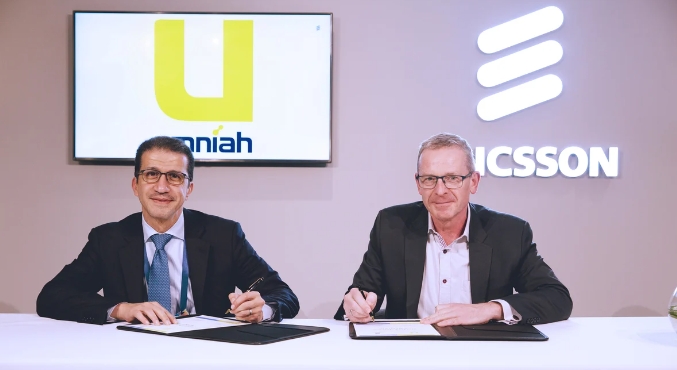A closer look at how fiber benefits AT&T's mobile business
The financial analysts at Bernstein offered some new insights into how AT&T's fiber network buildout is contributing to its mobility business. They concluded AT&T's efforts could be generating up to 100,000 additional new mobile customers every quarter.
"One of the key factors behind AT&T's strength in wireless is related to its approach to the fiber business," the analysts wrote in a new note to investors. "The company has consistently increased subscriber penetration in its fiber passings while simultaneously expanding its network. As a result, penetration has risen from 29.5% in the first quarter of 2020 to 40.3% in the first quarter of 2025. This is significant for wireless because, as AT&T's fiber subscriber base grows, so does the percentage of fiber customers who also utilize AT&T's mobility services."
The analysts argued that AT&T is successfully pulling two levers to maintain its momentum in the telecom market. The first is preventing its customers from leaving.
"AT&T has maintained the lowest postpaid churn rate in recent years (boosted by bundling and device upgrade plans)," the analysts wrote. "Retaining more customers means requiring fewer subscribers to achieve positive net [customer] adds. If AT&T had experienced Verizon's churn rate last quarter, AT&T's net [customer] adds would have been >60% lower."
But the second lever sits at the heart of AT&T's convergence strategy: Growing the number of customers who subscribe to both AT&T's mobility services and its fiber services. In the first quarter of 2025, the company said around 40% of its fiber customers now also subscribe to its mobility offerings.
"AT&T's bundle strength could be responsible for ~50,000-100,000 mobility net [customer] adds in the last quarter," wrote the Bernstein analysts. "To put these numbers in context, AT&T's industry leading churn advantage is responsible for another ~262,000 (if we apply Verizon's 0.95% monthly churn rate rather than AT&T's industry-leading 0.83%). Without these two effects (fiber/bundle contribution and best-in-class churn), net [customer] adds would have been close to zero or negative. AT&T's fiber business is one of the key reasons it is able to achieve healthy net adds when compared to peers."
Q1 results
AT&T's convergence strategy was a hot topic in the company's first quarter results.
"Our converged penetration continues to climb with more than 4 in 10 AT&T fiber households also now subscribing to our mobility services. This is a key trend because [customer] accounts with both fiber and wireless services have lifetime values that are more than 15% greater than customers with standalone services," said AT&T CEO John Stankey during the operator's quarterly conference call. "The message here is that the primary driver of our growth is our success at executing our fiber and 5G playbook, and that our increased investments in customer acquisition and retention are driving sustained growth in high value customer relationships. The fundamentals of our business are very strong."
Indeed, during the first quarter AT&T's 324,000 postpaid mobile phone customer net additions were far ahead of the 248,000 expected by most analysts. On its fiber side, AT&T added 261,000 fiber subscribers, up from a gain of 252,000 a year earlier, ending the quarter with 9.59 million.
Verizon, for its part, reported 289,000 postpaid phone net customer losses in the first quarter.
"On virtually every metric, AT&T outperformed Verizon," added the financial analysts at MoffettNathanson in a note to investors following the release of AT&T's earnings.
"With plans to build over +20 million new fiber passings by 2029, fiber is expected to remain a significant contributor to AT&T's mobile net [customer] adds in the future," added the Bernstein analysts in their report.
The context
Of course, AT&T isn't the only company interested in fiber.
For example, Verizon recently scored an FCC green light for its $20 billion purchase of fiber operator Frontier Communications (after Verizon promised to end most of its diversity, equity and inclusion programs). The deal will give Verizon more locations where it can sell both fiber and wireless connections.
And just this week, charter Communications signaled its intention to purchase fellow cable operator Cox Communications. Converged mobile and broadband services sit near the heart of that transaction.
T-Mobile, for its part, is also chasing the converged mobile/fiber opportunity. The company recently closed its deal with EQT for fiber operator Lumos – and it hopes for a similar deal with Metronet.
After closing its deal for Lumos, T-Mobile said it would offer its existing customer loyalty program to those new Lumos customers. That could be a signal of how T-Mobile plans to pursue the wireless/wireline opportunity.




